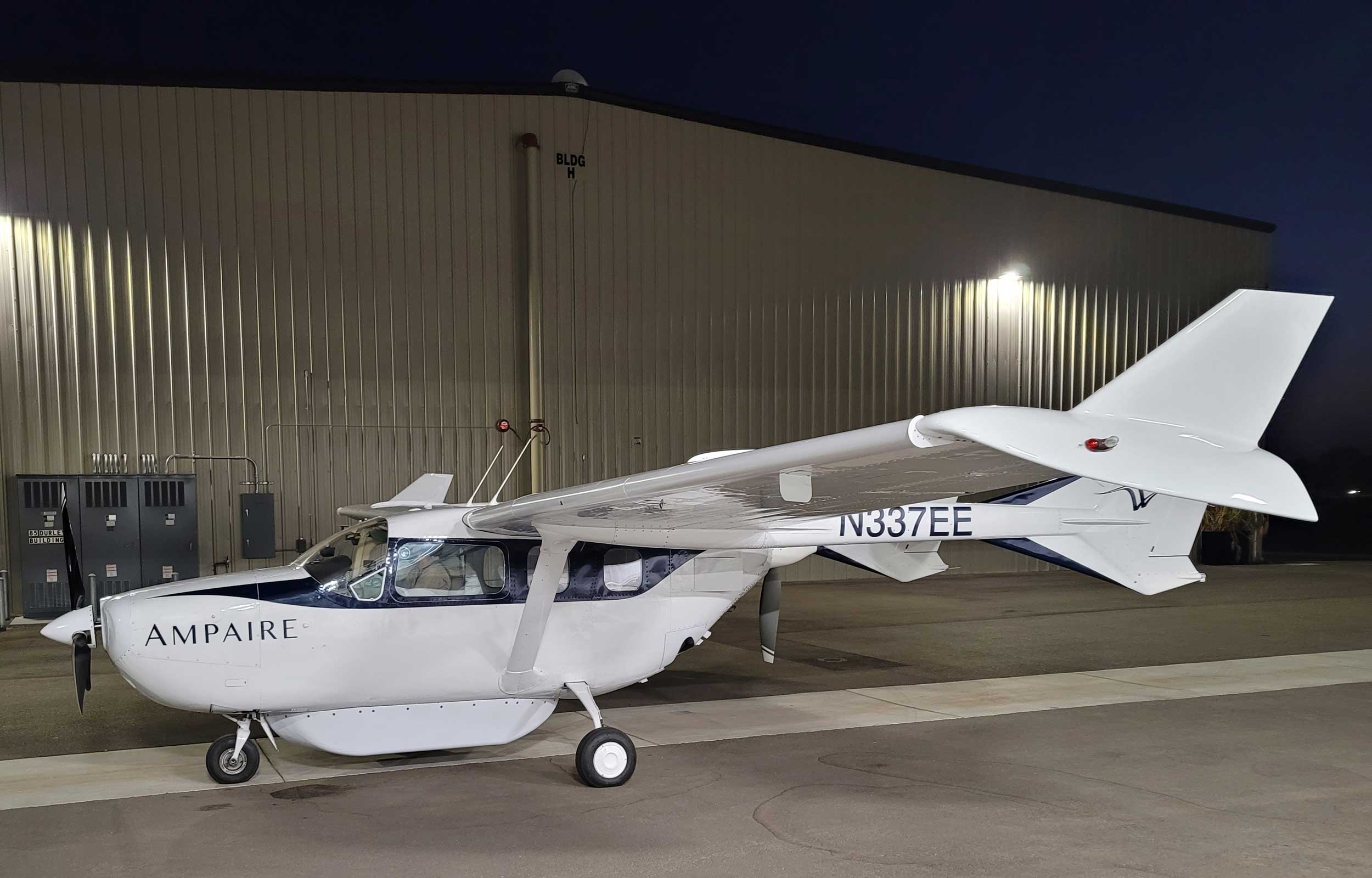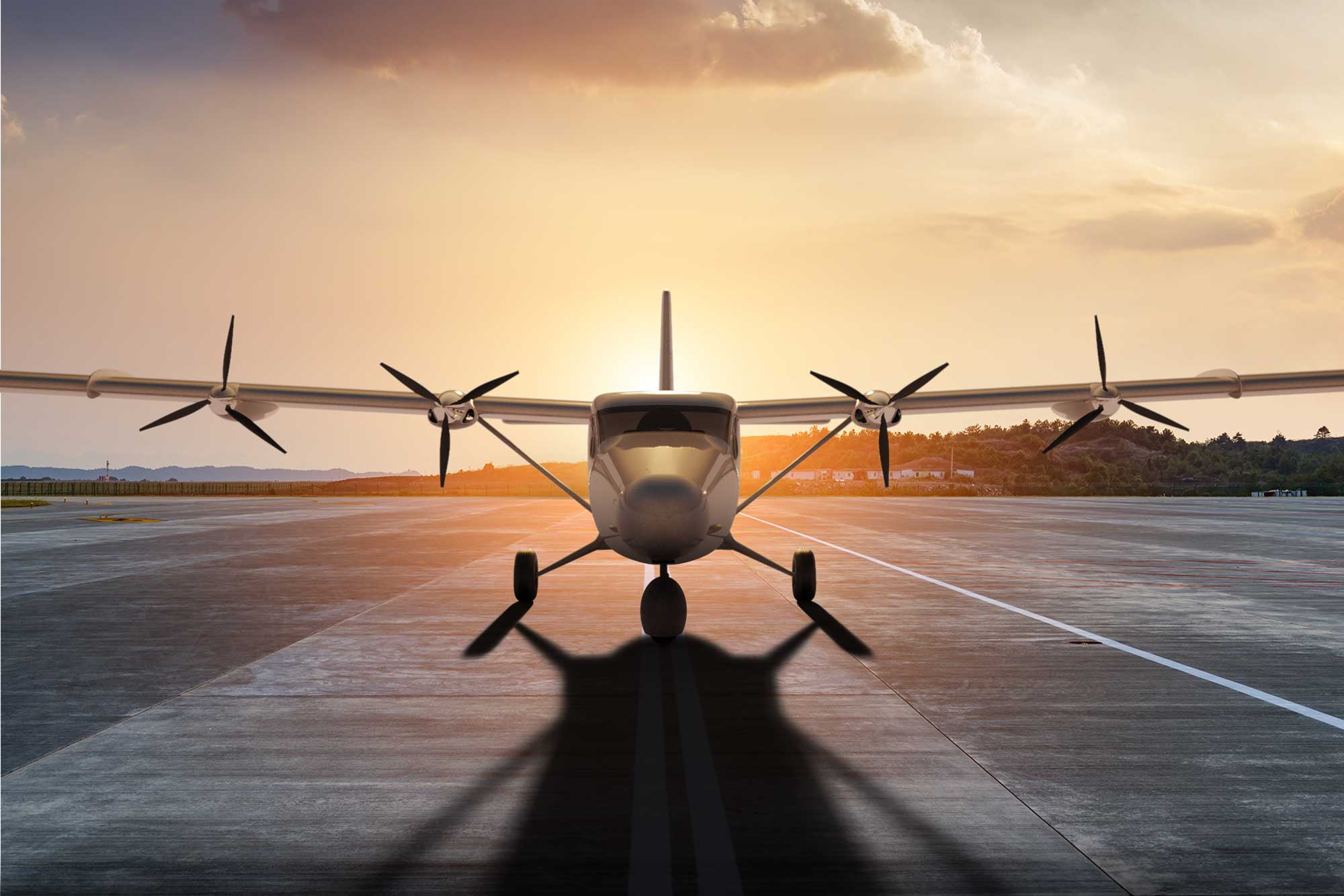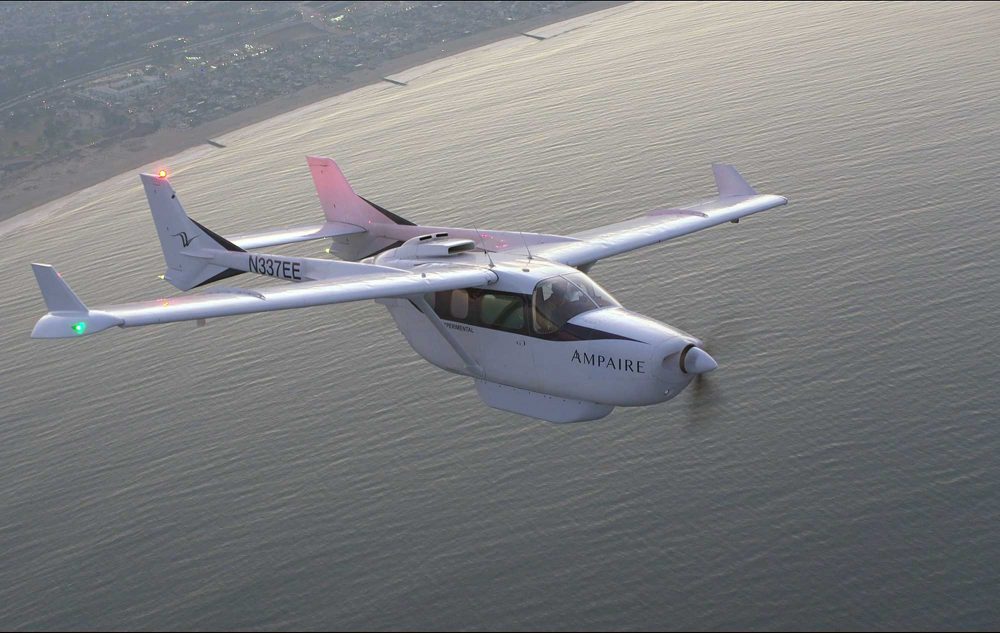Hybrid-electric aircraft developer Ampaire is to demonstrate its testbed aircraft in the UK in two locations: the Orkney Islands and Exeter in the south-west.
The demo flights are to show airlines how Ampaire’s hybrid-electric propulsion system could work on smaller, regional aircraft.
The first stop is the Orkney Islands in Scotland for participation this summer in what’s known as SATE – Sustainable Aviation Test Environment – a programme supported by the UK government’s Future Flight Challenge.

Ampaire’s ‘Electric EEL’ – a Cessna 337 upgraded to hybrid-electric power
Ampaire’s demo aircraft is a Cessna 337 which has power units in the nose and the tail. It has been prepared for the Scottish flights, over water between Wick and Kirkwall, with specially painted wingtips to represent the tartan pattern of Highlands and Island Airports Limited (HIAL), which oversees SATE.
Loganair is understood to be interested in the demo and Ampaire has revealed it is working on a hybrid Twin Otter, which Loganair already operates on some routes in the Scottish islands.
The second part of the UK trip is to the south-west, where the Ampaire hybrid aircraft will fly between Exeter and Cornwall, currently an unserved route that would “become more feasible with lower cost hybrid-electric propulsion.

2ZERO plans to test a hybrid-electric 19-seat Ampaire Eco Otter SX conversion of the Twin Otter developed in conjunction with Rolls-Royce. Images: Ampaire
Ampaire is part of a consortium called 2ZERO (Towards Zero Emissions in Regional Aircraft Operations) which also includes Rolls-Royce Electrical, University of Nottingham, Loganair, Exeter and Devon Airports, Cornwall Airport, Heart of the Southwest Local Enterprise Partnership (HotSWLEP), and UK Power Network Services.
The team has received a share of £30 million from the Future Flight Challenge for its 2ZERO proposal to demonstrate hybrid-electric aircraft on regional routes in the south-west.
“These flights engage the whole air transport ecosystem—airports, airlines, power companies, ATC, government regulators,” said Ampaire. “It’s a way to move electric aviation forward faster.”














